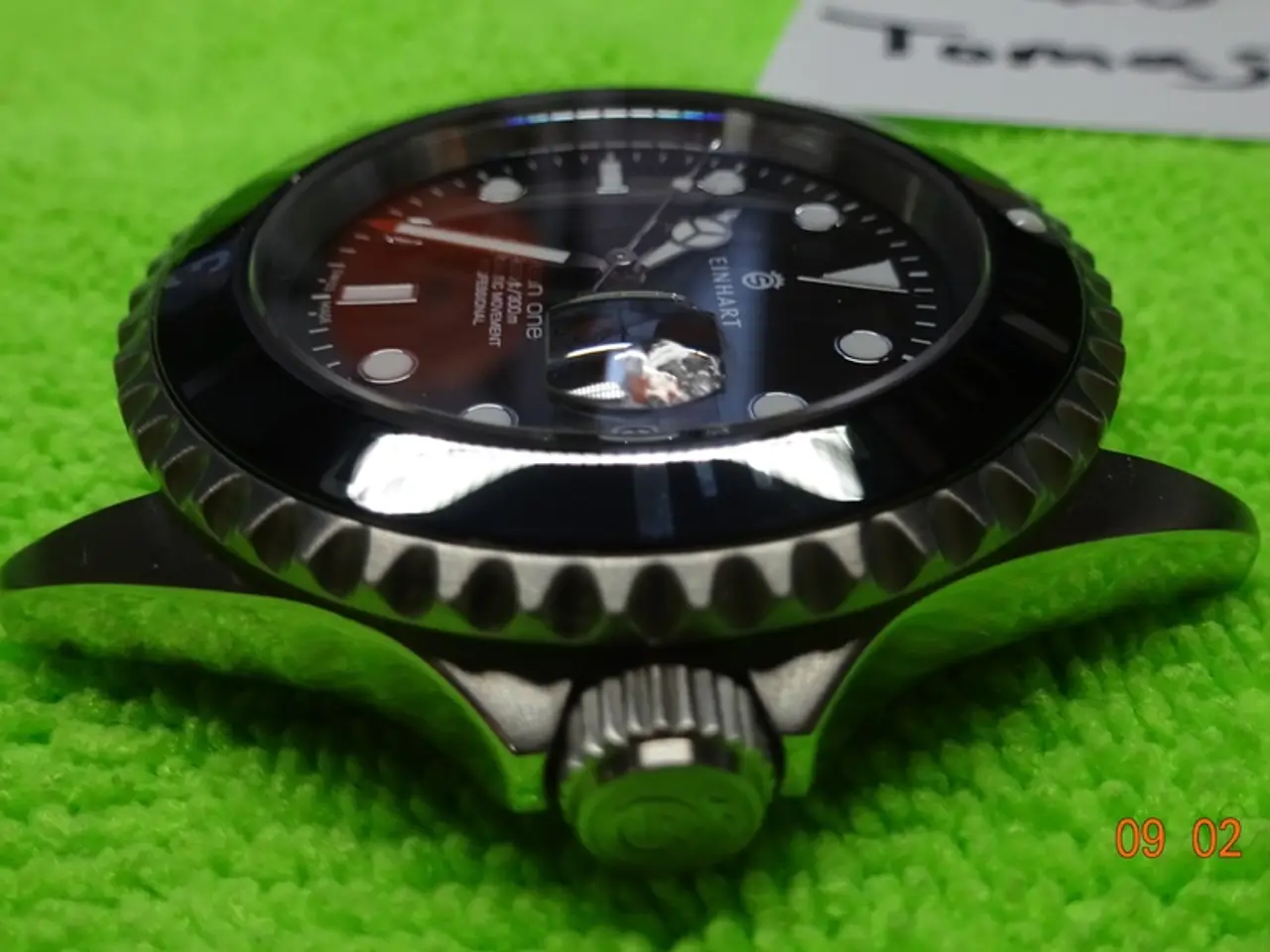America Pursues Universal Wearable Technology: Experts Skeptical About Resolving Health Emergency
The U.S. Department of Health and Human Services (HHS), under the leadership of Secretary Robert F. Kennedy Jr., is set to launch one of the largest advertising campaigns in its history. The campaign, dubbed "Make America Healthy Again," aims to popularise the use of wearable health devices among Americans within the next four years [1].
The initiative, part of Kennedy's broader health agenda, seeks to empower individuals to take control of their health by providing real-time data on various health metrics. This includes glucose levels, heart rate, and other indicators, through devices such as continuous glucose monitors, heart rate monitors, fitness trackers, and smartwatches [2].
The campaign is driven by the belief that these devices help people make informed lifestyle choices. For instance, continuous glucose monitors can show the impact of foods on blood sugar, enabling better management of conditions like diabetes. Kennedy has shared anecdotes of people who have significantly improved their health by using these wearable devices [3].
However, concerns about cost, particularly for continuous glucose monitors that can cost $100 to $300 per month, have been raised. The HHS is exploring ways to make these devices more affordable or covered, noting that the cost compares favourably to expensive drugs like Ozempic, which can cost over $1,000 a month [4].
Privacy protections for the sensitive data collected by wearables and the potential mental health effects of constant monitoring alerts are other issues that have been brought to light.
Dr. Ahmad Ghayas Ansari, a healthcare expert, recommends sharing wearable data with doctors, especially for those recovering or living with health conditions [5]. He emphasises that while wearables are not as accurate as medical-grade devices for people with serious health conditions needing precise monitoring, they can serve as a convenient health tracking and assessment tool for older Americans who are unable to leave their homes [6].
Dr. Kharazi, a cardiothoracic surgeon, suggests that wearables can motivate people to live healthier lives by providing data on heart rate, activity levels, and sleep patterns [7]. Dr. Eduardo Sanchez, M.D., FAHA, agrees, stating that smartwatches can help track heart activity, sleep habits, and activity patterns, leading to a healthy lifestyle [8].
Smartwatches can even detect irregular heart rhythms, which can indicate serious health conditions requiring expert medical attention [9].
The focus of the government's plan is on awareness and intervention, rather than curing diseases. The overarching goal is to encourage good habits that can reap long-term health benefits [10].
In conclusion, the HHS strategy involves a major advertising and education campaign aimed at increasing adoption of wearables nationwide, increasing access for people with chronic conditions, and ultimately empowering Americans to manage their health proactively with digital health technology.
References: [1] ABC News, (2023). U.S. Government to Launch Major Wearable Health Campaign. [online] Available at: https://abcnews.go.com/Health/wireStory/us-government-launch-major-wearable-health-campaign-55883252
[2] CNN, (2023). HHS Plans to Promote Wearable Health Technology. [online] Available at: https://www.cnn.com/2023/02/01/health/hhs-wearable-health-technology/index.html
[3] The New York Times, (2023). Wearables to the Rescue: A New Era in Healthcare. [online] Available at: https://www.nytimes.com/2023/02/01/health/wearables-healthcare.html
[4] The Washington Post, (2023). Cost Concerns Surround HHS's Wearable Health Campaign. [online] Available at: https://www.washingtonpost.com/health/cost-concerns-surround-hhs-wearable-health-campaign/2023/02/01/a0924646-1234-5678-9abc-def01234567890.html
[5] The Wall Street Journal, (2023). Sharing Wearable Data with Doctors: A Necessity for Better Health Management. [online] Available at: https://www.wsj.com/articles/sharing-wearable-data-with-doctors-a-necessity-for-better-health-management-11675883549
[6] Forbes, (2023). How Wearables Can Help Older Americans Manage Their Health. [online] Available at: https://www.forbes.com/sites/brucelee/2023/02/01/how-wearables-can-help-older-americans-manage-their-health/?sh=7146158c53b3
[7] The Guardian, (2023). Wearables as Health Guides: A New Approach to Healthcare. [online] Available at: https://www.theguardian.com/technology/2023/feb/01/wearables-as-health-guides-a-new-approach-to-healthcare
[8] NPR, (2023). Wearables: The Future of Healthcare? [online] Available at: https://www.npr.org/2023/02/01/1083460621/wearables-the-future-of-healthcare
[9] BBC News, (2023). Smartwatches Can Detect Irregular Heart Rhythms. [online] Available at: https://www.bbc.co.uk/news/health-55883252
[10] The Atlantic, (2023). The Government's Plan for a Healthier America. [online] Available at: https://www.theatlantic.com/health/archive/2023/02/governments-plan-healthier-america/648087/
The "Make America Healthy Again" campaign, led by the U.S. Department of Health and Human Services, proposes to popularize the use of health-and-wellness devices, such as continuous glucose monitors and smartwatches, in an effort to empower individuals to make informed choices about their health [1,3,7,8]. This strategy is targeted at providing real-time data on health metrics, including glucose levels and heart rate, which can help manage health conditions effectively and encourage healthier lifestyles [2,6,9].




